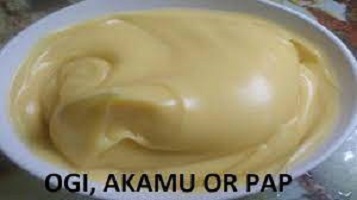Is Ogi Good for Diabetes
Is Ogi Good for Diabetes

Diabetes patients can consume ogi, also known as akamu or pap. Ogi has a moderate glycemic index, which means that when eaten, it raises blood glucose slowly rather than rapidly.
What is Diabetes?
Diabetes occurs when your body either does not produce enough insulin or does not use it as effectively as it should.
Diabetes is a long-term health condition that affects how your body converts food into energy.
The majority of the food you eat is converted into sugar (glucose) by your body and released into your bloodstream.
When your blood sugar rises, your pancreas sends a signal to release insulin. Insulin functions as a key, allowing blood sugar to enter cells and be used as energy.
Diabetes occurs when your body does not produce enough insulin or does not use it as effectively as it should.
Too much blood sugar remains in your bloodstream when there is insufficient insulin or when cells stop responding to insulin.
This can lead to serious health issues such as heart disease, vision loss, and kidney disease over time.
Diabetes does not yet have a cure, but losing weight, eating healthy foods, and staying active can all help.
Is Ogi Good for Diabetes ~ Ogi and Diabetes?
Simply add less sugar and three crowns milk when eating Ogi as a diabetic….it is also important to note that Ogi made from guinea corn (Ogi baba) is better for diabetics than other types of pap.
However, when drinking it, make sure to eat in moderation.
It is also critical for you to understand that, in addition to medications and diet, exercise is a critical component of blood sugar control.
How is Ogi formed?
Ogi is made from white corn while yellow ogi is made from yellow corn.
It entails soaking the corn for several days before blending it into a thick paste. It contains a lot of carbohydrates.
Diabetes and Corn Consumption: Is It OK? Can you eat corn if you have diabetes?
If you have diabetes, you can eat corn. Corn contains energy, vitamins, minerals, and fiber. It also has a low sodium and fat content.
Corn
One medium-ear cooked yellow sweet corn contains:
- 77 calories
- 1 g carbohydrates
- 4 g dietary fiber
- 9 grams of sugar
- 5 grams fiber
- 9 grams protein
- 1 gram of fat
Corn also contains vitamin A, vitamin B, vitamin C, potassium, magnesium, iron, and zinc.
The glycemic index of corn
The glycemic index indicates how food affects blood glucose (blood sugar) (GI). Foods with a GI of 56 to 69 are considered medium glycemic.
Low-glycemic foods have a score of less than 55. Foods with a high glycemic index (70 or higher) can raise your blood sugar.
Corn has a glycemic index of 52
If you have diabetes, you should concentrate on low-GI foods.
If you are unable to produce enough insulin (a hormone that aids in the processing of blood sugar), you will most likely have an excess of blood glucose
Are there any benefits to eating corn? Is Ogi Good for Diabetes
According to a recent study, eating a lot of flavonoids (the most abundant group of phenolic compounds in corn) lowers the risk of chronic conditions such as diabetes.
Lesson to be learned about Is Ogi Good for Diabetes
Drinking pap has some advantages, but it’s important to understand how its high carbohydrate content can raise blood glucose levels and affect how you manage your diabetes.
Although not everyone with diabetes reacts the same way to certain foods, adhering to dietary guidelines and keeping track of what you eat can be beneficial.
Do you have diabetes? Eat these two Nigerian foods to get well quickly.
If you have diabetes, the information in this post may help you avoid a heart attack, save your eyesight, kidneys, legs, and nerves, and even save your life.
There is no stage of Type 2 diabetes that cannot be improved with smart dietary changes.
And the sooner they are implemented, the greater the health benefits. Here are two Nigerian foods that can help reverse type 2 diabetes:
ONIONS
Onions are high in trace mineral chromium, which has a powerful positive effect on blood glucose levels.
According to research, chromium helps your body use insulin more efficiently, maintains stable blood sugar levels, and reduces the need for diabetes medications.
NUTS
These little diabetes fighters are loaded with healthy fats, vitamins, and minerals. If you have prediabetes or want to avoid Type 2 diabetes, eating nuts can help.
If you have diabetes, nuts can help you control your blood sugar and weight.
Sorghum, like unripe plantain, is also beneficial to diabetics. The tuber for weight loss and diabetes prevention
Diabetes and Guinea Corn
Several studies have shown that guinea corn is a healthy diet for diabetics.
This is due to the fact that a good blood sugar-controlling diet may help to reduce the risk of some of the major diabetic complications, such as a sugar spike.
A recent study discovered that eating a low-sugar diet helps to keep the body’s glucose levels under control.
It also protects against oxidative damage, making it an effective method of managing Diabetes Mellitus
What foods to avoid if you have diabetes? Best and Worst Diabetes Foods
Worst Choices
- Fried foods.
- Meat with a higher fat content, such as ribs.
- Bacon made from pork.
- Common cheeses.
- Skinned poultry.
- Fish that have been deep-fried.
- Deep-fried tofu.
- Lard-prepared beans.
Which swallow is good for diabetes?
Swallow: Served as a side dish to soups, the best swallows for diabetic patients are fufu.
Unripe plantain, wheat, and guinea corn are a few options of fufu
Is millet pap healthy for diabetics?
Millet has a lower glycemic index (GI) than most other grains. That is, it raises your blood sugar gradually rather than in sharp spikes.
High-fiber, low-GI foods stabilize blood sugar, lower cholesterol, and aid in weight loss. All of these things are beneficial to people with diabetes
The disadvantages of drinking pap
If you do not have insulin resistance or diabetes, you can eat maize meal porridge or ‘pap’ as it is known in South Africa.
Unfortunately, if eaten hot, maize meal porridge has a high glycemic index (GI)
Diabetes-Inducing Foods
Here are ten foods to avoid if you have diabetes, as well as some healthier substitutes.
- Processed meats
- Full-fat dairy products
- Packaged snacks and processed baked goods
- White carbohydrates
- Sweetened breakfast cereals
- Dried fruits
- French fries.
Fruits to avoid if you have diabetes
Diabetics should avoid high-GI fruits or consume them in moderation so that their blood sugar levels do not spike unexpectedly.
Pineapple, watermelon, mango, lychee, and banana have high GI values, making them the worst fruits for diabetics.
Is maize good for diabetics?
Maize is a well-known food with high nutritional value; corn contains high levels of flavonoids and phenolic compounds, which help reduce the risk of chronic diseases such as diabetes.
Not only that, but corn contains a variety of nutrients, vitamins, and minerals that the body requires.
Is yam good for diabetics?
Yes, diabetics can eat yams. Yam has a lower GI, making it safe to consume without causing blood sugar spikes.
Yam is also high in antioxidants, fiber, vitamins, and minerals, which aid in the proper functioning of your body.
Types of Diabetes
Diabetes is classified into three types: type 1, type 2, and gestational diabetes (diabetes while pregnant).
Healthy lifestyle changes, such as losing weight, can help to prevent or delay type 2 diabetes.
- Consuming nutritious foods.
- Being physically active.


